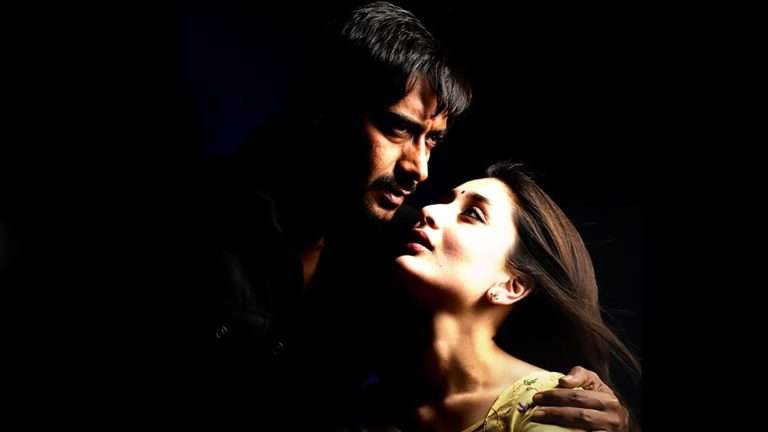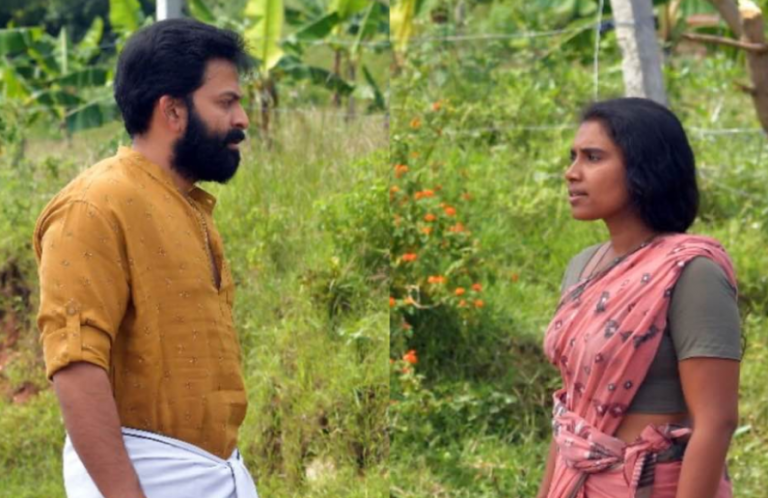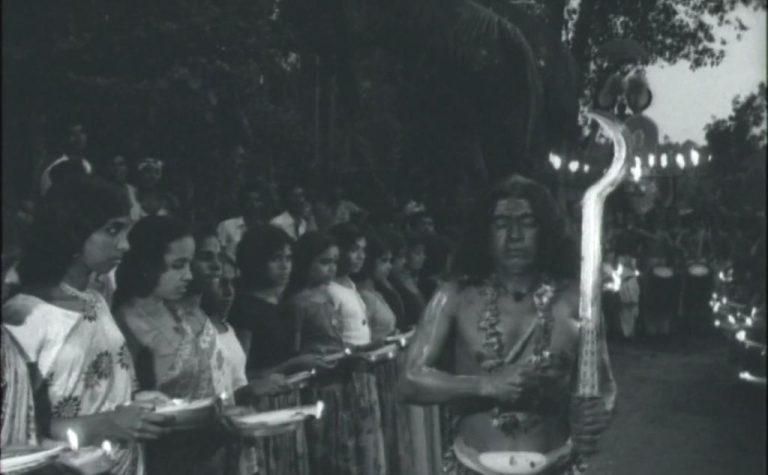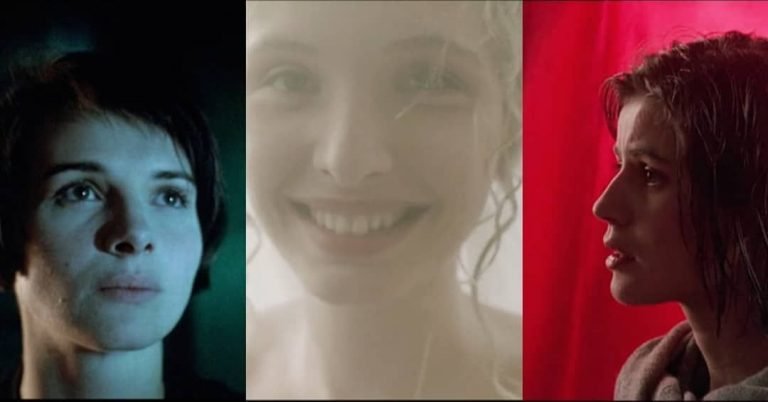All the world’s a stage,
And all the men and women merely players;
They have their exits and their entrances.
The period between the 1970s and 80’s is widely considered as the golden age of Malayalam cinema, which saw a surge of new-age writers and directors that brought in fresh perspectives and styles. It was a time when the first generation of film institute graduates based in Kerala produced several movies that introduced a new visual language, receiving critical acclaim as well as acceptance from the Malayali audience.
Hailed as one of the prominent film-makers of the Malayalam movie industry in the 1980’s and the 90’s along with directors like Padmarajan, Aravindan and Bharathan, K.G George experimented with the art of filmmaking like no other, defying stereotypes and pushing the limits set by conventional filmmaking practices that focused mostly on adaptations of novels, stories and plays.
His films explored the complexities of the human psyche and relationships, without resorting to glorification or sentimentalism. “Yavanika”, directed by K.G. George, was released in 1982 and went on to become one of the most watched and appreciated films of his oeuvre. The movie captures the lives of a group of ordinary men and women of different ages who work for a living in a theatre troupe. The artists in the troupe come from different backgrounds, and Ayyappan is one of them.
Ayyappan, a middle-aged man who plays Tabala for the troupe, is portrayed as a wastrel and womanizer who lusts after every new woman in the troupe. Ayyappan is constantly shown to be disrespecting every woman, including his first wife, whom he had abandoned long ago, as well as Rohini, the woman with whom he lives.
Rohini and Ayyappan are not legally wed, but live together and work in the same theatre troupe. Their relationship seems to be far from that of a normal couple from the beginning of the movie itself. A rogue drunkard, he doesn’t take care of his family or save money. None of the other artists or the owner of the troupe is surprised when Ayyappan doesn’t show up in time for the play one day. An alcohol addiction combined with the arrogance from the talent that he’s known for, it was clearly not a new occurrence. However, it is later revealed that Ayyappan is missing. The plot of the movie centers around the investigation into Ayyappan’s disappearance and the people who might be directly or indirectly involved in it.
The film uses the ‘Rashomon Effect,’ a storytelling technique in which different characters provide contradictory interpretations or recollections of the same event, thereby giving different perspectives of the same incident to the audience themselves. The term is derived from the movie “Rashomon,” directed by Akira Kurosawa. In the movie, four witnesses give four different testimonies for the same crime. It explains how various conflicting parties describe the same case, reflecting their subjective understanding and self-interested advocacy rather than objective reality. (Davis et al. 2018)
‘The Rashomon Effect’ is used in storytelling to create conflicts that propel the plot forward and often to give uncertain endings. It is mostly used in murder mysteries by presenting multiple suspects who produce conflicting versions of the same event, allowing the viewers to see the characters as they are or as the filmmaker intended, leaving room for interpretation. The Rashomon effect has been used in several movies like “Andha Naal” (1954), “The Usual Suspects” (1995), “Virumaandi” (2004), “Vantage Point” (2008), “Predestination” (2014), “Gone Girl” (2014), and “Aattam” (2023), the recent national award winner for best feature film. Yavanika can be considered one of the earliest movies to experiment with the ‘Rashomon Effect’ in Malayalam Cinema, and became popular among the common audience, as well as receiving critical acclaim.
The movie begins in media res and focuses on the disturbance brought in by someone’s disappearance, despite how hated that person might be, as well as the looming presence of death. It has the murdered villain present as an unseen entity throughout the movie, his presence emphasized by the absence and through flashbacks. The turn of events as the movie goes forward can be seen with reference to Tzvetan Todorov’s narrative theory, which identifies a common structure of equilibrium, disruption, and resolution. This approach helps to uncover the underlying patterns that shape storytelling in cinema. (Todorov and Weinstein).
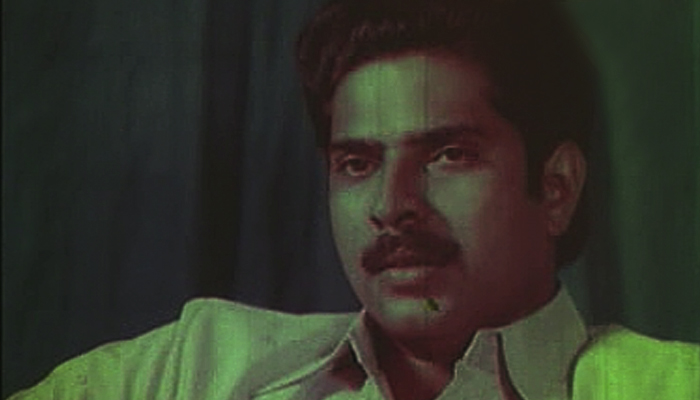
The movie boasts a well-written screenplay and has gone on to win the award for best screenplay in that year’s State awards as well. The movie was shot in Vattiyoorkaavu, a place in Trivandrum, capturing the beauty and innocence of the village and the lively theatre troupe, a perfect curtain that hides the truth behind the intriguing events that shake their small world.
The name of the movie, “Yavanika,” translates to the ‘Curtain,’ thereby signifying both the setting of the story and the mystery that curtails the tragedy that takes place. “Yavanika” is a crime investigation thriller, which, unlike the movies of the same genre that came out in Malayalam in the later years, doesn’t draw attention more than necessary towards the character that appears as the investigator.
Read: 35 Best Malayalam Movies of All Time
The movie presents an array of archetypal characters that elevate the plot to another level. These characters, no matter big or small, possess relevance and depth, thereby enhancing the narrative in a unique way that Malayalam cinema had never seen. Vladimir Propp’s analysis of Russian folk tales identified 31 narrative functions and character types that can be found in many films. “Yavanika” makes use of several classic character types
that are common to the murder mystery genre. For example, it contains the Villainous Victim trope, where the abuser gets murdered by the abused. Ayyappan is shown as a drunkard, and alcohol is a factor considered to affirm masculinity, combined with a man determined to assert his sexual dominance over women and superiority among other men, gives one of the most commonly assumed abuser-villain characters who meets a deserved, but horrible death in the end.
The nonchalant character of Vishnu, Ayyappan’s estranged son from his first marriage, manages to create confusion in the minds of the police as well as the audience when some members of the troupe are almost certain that he is the murderer. Vishnu becomes the premature suspect, or the ‘Red herring’, that tries to mislead the police and the audience from identifying the actual murderer for some time.
This is also an example of a father-son archetype where the son has hatred for the absent father who doesn’t love or take care of his family and indulges in adultery. The character of Balagopalan, the primary suspect, is an example of the Casanova wannabe who flirts with women and is, coincidentally, the artist who usually acts as the male lead/lover in their plays.
The character of Kollappally comes off as the kind, gentle, and level-headed guy who can be trusted easily. These character tropes aid in building the narrative and the conflict through the ‘Rashomon Effect.’ All the members of the troupe hold a grudge against Ayyappan in one way or another, resulting in multiple speculations about the events that led to Ayyappan’s disappearance when they are questioned by the police. All of them have their own experience with Ayyappan to talk about. Each specific character holds depth, no matter if it is one of the lead actors in the troupe, the artists who come and go in between, or Ayyappan himself.
Men and women with different shades of character nature appear on screen, and as Ayyappan is seen as a ruthless, ‘manly man’- whose ‘adventurous side’ the innocent women fall for, as Eeraly tells his wife – the person behind his disappearance or murder is assumed to be a man by both Eeraly and the audience from the beginning of the investigation. The filmmaker succeeds in fooling us to a point in believing that only one of the men who has hatred for Ayyappan could be strong enough or brave enough to finish him. Rohini is shown as the helpless woman in distress, who we assume may or may not be involved in the murder, but is certainly not the murderer herself.
The setting of the story is established in the first five minutes of the movie itself. The initial scenes from inside the bus give us a glimpse into the dynamics of the troupe and the nature of each person, even that of Ayyappan, who is missing. The annoyed and angry answers that Rohini gives them when asked about Ayyappan also give us a glimpse into the troubled relationship that she has with him.
The cheerful music that plays in the background during their journey sets the movie’s initial mood, so that neither the characters in the movie nor the audience could predict what unfortunate events might unfold thereafter. An interesting characteristic of the movie is that it begins with the troupe performing on stage, and only the part of the play up to the first conflict is shown. As the story progresses, the later parts of the play are shown in bits, each from a different stage at a different place.
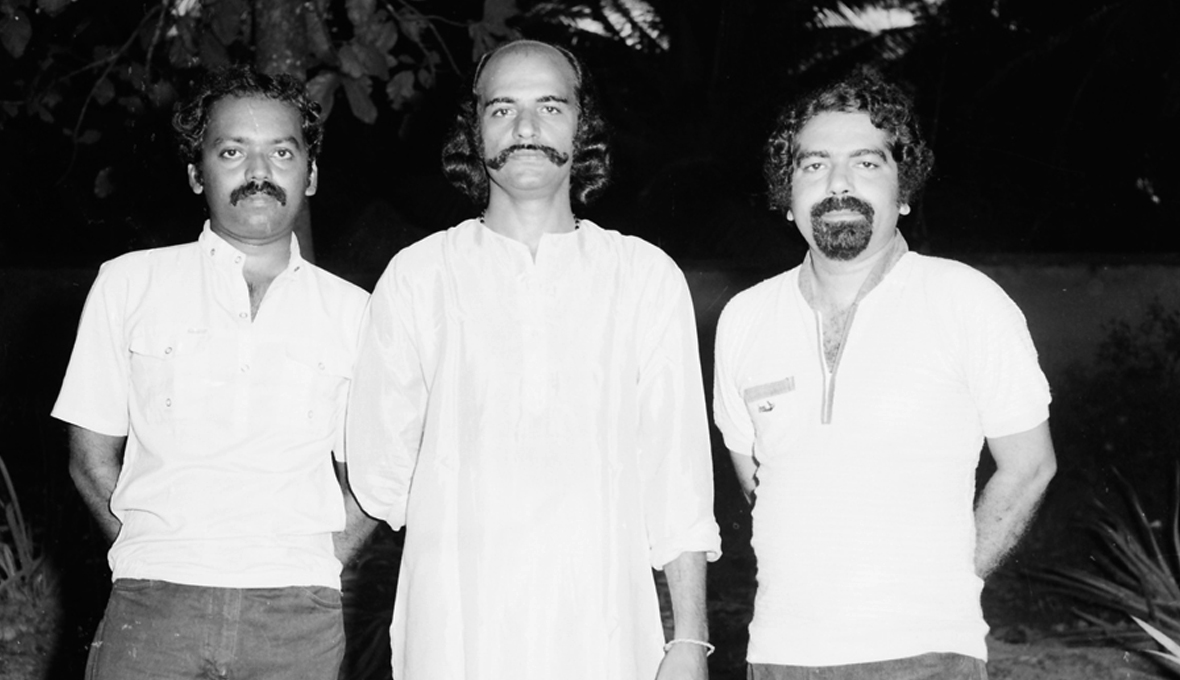
This gives off the idea that whatever problems may arise, the show is supposed to go on. The troupe continues to perform plays while the investigation happens in parallelly. The name of the play that they perform is seen on top of the bus in which the troupe travels – ‘Karuppum Veluppum’, meaning ‘Black and White’. It is only shown for a fleeting moment, but can be considered an important hint for the mystery in the movie.
The song during the first part of the play also gives the same idea, with lyrics that talk about the world as a chessboard with black and white pieces that take turns. Another hint about the climax could be found in the characters of the play, where Rohini, who plays the heroine, is in love with a man, played by Balagopalan, while Kollappally acts as the groom found by the heroine’s parents for her.
More Related: The 10 Best Malayalam Movies Of 2024
Rohini’s character is disgusted by the villainous character played by Kollappally, who is adamant on marrying her against her wishes, even though he knows that she is in love with another man. This part of the play clashes with the reality off-stage, where Rohini seems to have respect and a kind of affection for Kollappally, and Kollappally seems to reciprocate it, overlooking the relationship she has with the formidable Ayyappan.
The play also becomes an alternate world where people act out in a way that is of a different shade or version of their real personality behind the stage. So, it is only fitting that the climax of the movie takes place on the stage too, where a scared Rohini, instead of trying to escape from her conscience, admits her guilt publicly.
The flashbacks that show Rohini’s own experience with Ayyappan depict how cunning and cruel he can be. This, combined with the other flashbacks that recount the experiences of the other troupe members, makes it clear that Ayyappan’s disappearance has come off as a blessing to many. This part of the movie also manages to add more to the character of Ayyappan than what the audience could gather about him till that point.
From the conversations between the artists and the scene that reveals Ayyappan’s other family, it is already deciphered that he was an irresponsible, violent drunkard who never cared for the people around him, but during the investigation, a different side of him as a treacherous and cunning predator also comes into light.
We also get a closer look at each character during the questioning conducted by Eeraly. When called for questioning, each of them possesses a different body language and a unique attitude towards the situation. This is also where Vishnu, the false suspect, is hinted at as the possible murderer. His body language gives away his stubborn and fearless character, and the contempt he has for his father.
The scene where he admits that he might have killed his father himself if the circumstances were right reveals how bad their relationship was. Many similar scenes in the movie establish the relationship between the characters without requiring much dialogue or explanation. The jump cuts that are shown during the questioning of the troupe members, as well as the close-ups of the characters and the conflicts that happen between them, establish the relationships between the characters.
For example, a scene after the discovery of Ayyappan’s body shows a non-verbal exchange between a visibly scared Rohini and a tensed-looking Kollappally in the shadows of the backstage curtain, while Balagopalan performs a sad song about love and separation in the foreground. This scene also gives a hint about a possible romantic affection between the two and the fact that they might never get united in peace.
George uses the tool of telling the story through an enactment of a play to enhance the drama. This gives a chance to the audience to frame their own thoughts about the events that take place in the movie while building a connection with the characters, in order to arrive at a conclusion by themselves.
The movie finally reveals that the murderer of Ayyappan was none other than Rohini, and the flashback of the night when Ayyappan was murdered fits perfectly into classic murder mystery standards. The scene where Ayyappan meets his death shows a sudden shift in their dynamics, where the abused punishes the abuser. This switching of the positions can be observed from comparing the first interaction between Ayyappan and Rohini the day she arrived at his house, to the climax scene where she advances on him in anger and contempt, deciding to end his life for the sake of all the Rohinis who could have ended up in the house like her.
Overall, “Yavanika” masterfully employs the Rashomon Effect to unravel its murder mystery, transforming the narrative into a haunting Gothic drama of perception and truth. The casting plays a pivotal role in solidifying character tropes, subtly planting narrative clues, and enriching the plot at every turn. Together, these elements make the film a textbook example for filmmakers, not just in Malayalam cinema, but across the Indian film industry as a whole.


